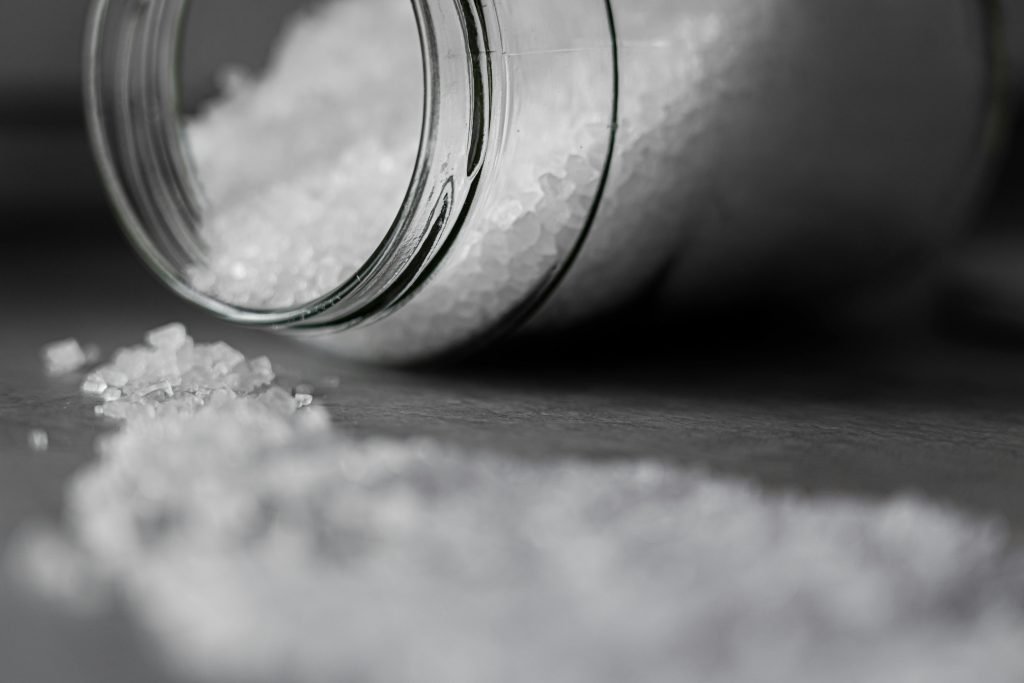What You Need to Know
Electrolytes for POTS is crucial. Electrolytes play a vital role in keeping your body balanced, energized, and functioning optimally. For individuals with Postural Orthostatic Tachycardia Syndrome (POTS), maintaining proper electrolyte levels isn’t just about feeling good—it’s about managing daily symptoms and improving quality of life. In this blog post, we’ll explore everything you need to know about electrolytes, their functions, sources, and why they’re essential for those living with POTS.
What Are Electrolytes?
Electrolytes are minerals that carry an electrical charge when dissolved in body fluids. These minerals include sodium, potassium, magnesium, calcium, chloride, phosphate, and bicarbonate. They are essential for many bodily functions, including:
- Regulating fluid balance
- Supporting nerve signaling
- Aiding muscle contractions
- Balancing blood pressure
- Maintaining pH levels
When you sweat, urinate, or lose fluids for any reason, you also lose electrolytes. Replenishing them is crucial for keeping your system in check, especially if you have a condition like POTS.
Do you track your daily sodium intake for POTS?
Why Electrolytes Matter for POTS
POTS affects the autonomic nervous system, which controls involuntary functions like heart rate, blood pressure, and blood vessel dilation. One of the hallmark symptoms of POTS is orthostatic intolerance, which causes symptoms like dizziness, rapid heart rate, fatigue, and fainting upon standing.
Electrolytes help stabilize fluid volume and blood pressure—two major areas of concern in POTS management. Proper electrolyte balance can reduce symptom severity, improve endurance, and enhance overall well-being.
Key Electrolytes & Their Roles in POTS
Let’s break down the most important electrolytes and their specific benefits for those dealing with Electrolyte POTS issues.
1. Sodium
Sodium is perhaps the most critical electrolyte for managing POTS. It increases blood volume by helping the body retain fluids, which supports circulation and reduces the drop in blood pressure when standing.
Functions:
- Maintains fluid balance
- Supports blood pressure regulation
- Enhances nerve and muscle function
Best FOOD Sources of Sodium:
- Table salt or sea salt
- Broths and soups
- Salted nuts and seeds
- Pickles and olives
- Electrolyte drinks (like Liquid I.V., LMNT, or Nuun)
Tip: POTS patients often require higher sodium intake—sometimes up to 8–10 grams per day—as guided by a healthcare professional.
2. Potassium
Potassium helps balance sodium in the body and is critical for heart rhythm, muscle contractions, and preventing cramps.
Functions:
- Regulates heartbeat
- Supports nerve function
- Balances sodium levels
Best FOOD Sources of Potassium:
- Bananas
- Avocados
- Sweet potatoes
- White beans
- Tomato juice
- Coconut water
Tip: Pairing potassium-rich foods with sodium helps maintain overall electrolyte equilibrium.
3. Magnesium
Magnesium plays a key role in over 300 enzymatic processes, including energy production, nerve function, and muscle relaxation. For POTS sufferers, it can ease muscle cramps and improve sleep quality.
Functions:
- Helps nerve conduction
- Reduces muscle twitching and fatigue
- Calms the nervous system
Best FOOD Sources of Magnesium:
- Pumpkin seeds
- Almonds
- Spinach
- Dark chocolate (moderation is key)
- Legumes and whole grains
Tip: Magnesium glycinate and citrate are among the most absorbable supplement forms.
4. Calcium
Calcium isn’t just for bones—it also plays a role in muscle function and vascular contraction. Though not as emphasized in POTS management as sodium and potassium, it still supports electrolyte balance.
Functions:
- Enables muscle contractions
- Assists in nerve signaling
- Regulates vascular function
Best FOOD Sources of Calcium:
- Dairy products
- Leafy greens like kale and collards
- Fortified plant milks
- Sardines with bones
Symptoms of Electrolyte Imbalance in POTS
Electrolyte imbalances can worsen POTS symptoms. Knowing what to watch for can help you address deficiencies before they become problematic.
Monitoring for electrolyte imbalances is essential, as these minerals play a critical role in nerve function, muscle contractions, hydration, and overall health. Here’s how you can keep track:
Signs & Symptoms to Watch For
Electrolyte imbalances can cause various symptoms, including:
- Dehydration symptoms – excessive thirst, dry mouth, or dark urine
- Muscle issues – cramps, weakness, twitching
- Heart irregularities – palpitations, irregular heartbeat
- Neurological symptoms – confusion, dizziness, headaches, brain fog
- Gastrointestinal disturbances – nausea, vomiting
Testing & Monitoring
- Blood tests – A simple electrolyte panel can measure levels of sodium, potassium, calcium, magnesium, and chloride.
- Urinalysis – Helps assess electrolyte balance and kidney function.
- Home monitoring – Smart devices can track hydration levels, but they don’t replace lab testing.
- Daily intake awareness – Ensuring proper nutrition, hydration, and balanced sodium/potassium intake is vital.
If you’re experiencing these symptoms, speak with a healthcare provider and consider reviewing your electrolyte intake.
Preventive Measures
- Stay hydrated with electrolyte-rich fluids when sweating excessively or ill.
- Eat a balanced diet with sources of potassium (bananas, sweet potatoes), calcium (dairy, leafy greens), and magnesium (nuts, seeds).
- Consult a doctor if symptoms persist or if you suspect chronic electrolyte imbalance.

Best Practices for Maintaining Electrolyte Balance
Managing Electrolyte POTS means being proactive. Here are some practical steps:
1. Start Your Day Hydrated: Drink a glass of water with a pinch of sea salt or a pre-made electrolyte solution first thing in the morning.
2. Sip Electrolytes Throughout the Day: Don’t just chug—steady intake prevents spikes and crashes. Use products like DripDrop, Liquid I.V., or homemade mixtures with salt, citrus juice, and honey.
3. Include Electrolyte-Rich Foods: Aim for a balanced diet that includes high-sodium, potassium-rich, and magnesium-loaded foods.
4. Avoid Overhydration Without Electrolytes: Drinking excessive plain water can dilute sodium levels, making symptoms worse.
5. Monitor Activity and Adjust: Sweating increases fluid and electrolyte losses. On active or hot days, increase your intake accordingly.
Homemade Electrolyte Drink Recipe
Simple Electrolyte Mix for POTS:
- 2 cups water
- 1/4 tsp sea salt
- 1/4 cup orange juice or lemon juice
- 1 tbsp honey or maple syrup
- Optional: pinch of potassium chloride (found in salt substitutes)
Mix well and sip throughout the day. This DIY drink can be a low-cost alternative to commercial electrolyte packets.
Supplements & Electrolyte Tablets
While food is the best source of electrolytes, supplements and tablets can help fill gaps, especially for those with restrictive diets or absorption issues.
Popular Electrolyte Brands for POTS:
- LMNT
- Nuun
- Liquid I.V.
- Ultima Replenisher
- DripDrop
Always consult with a doctor before starting new supplements, especially if you have kidney, heart, or blood pressure concerns.
Electrolyte Testing & Lab Work
Some POTS patients may benefit from periodic blood work to monitor sodium, potassium, and magnesium levels. Speak with your healthcare provider about getting tested if you experience worsening symptoms despite dietary changes.

GnarlyTree | DIAGNOSTIC TESTS & CARE
Navigating the Healthcare System with POTS
Living with Postural Orthostatic Tachycardia Syndrome (POTS) can be overwhelming, especially when trying to navigate the complexities of the healthcare system. From finding knowledgeable providers to managing insurance and treatment...
⚡ FAQ: Electrolytes and POTS
1. What are electrolytes and why are they important for POTS?
Electrolytes are minerals that regulate fluid balance, muscle function, and blood pressure; they are crucial for managing POTS symptoms like dizziness and fatigue.
2. How do electrolytes help with POTS symptoms?
Electrolytes stabilize blood pressure and fluid volume, which are key in reducing symptoms like dizziness and rapid heart rate in POTS.
3. Why is sodium especially important for people with POTS?
Sodium helps increase blood volume and supports circulation, which is essential for preventing the blood pressure drops that characterize POTS.
4. What foods are rich in potassium, and why is it important for POTS?
Potassium helps regulate heartbeat and muscle contractions; sources include bananas, avocados, and sweet potatoes, which balance sodium levels.
5. How does magnesium support those with POTS?
Magnesium aids nerve function, reduces muscle cramps, and helps calm the nervous system, all of which can improve POTS symptoms.
6. What role does calcium play in POTS management?
Calcium supports muscle contractions and vascular function, helping to maintain electrolyte balance, although it’s less emphasized than sodium and potassium.
7. What are the signs of an electrolyte imbalance in POTS?
Symptoms like dizziness, muscle cramps, fatigue, and irregular heartbeat may indicate an electrolyte imbalance in those with POTS.
8. How can I maintain my electrolyte balance with POTS?
Hydrate consistently, include electrolyte-rich foods, and use electrolyte drinks throughout the day to avoid imbalances.
9. Should I use electrolyte supplements for POTS?
Supplements can help fill gaps in your diet, but it’s essential to consult a doctor before starting, especially if you have kidney or heart issues.
10. Can electrolyte testing help with POTS management?
Yes, periodic testing of sodium, potassium, and magnesium levels can help monitor and adjust your electrolyte intake for better symptom control.
Final Thoughts on Electrolyte POTS Management
For individuals with POTS, understanding the role of electrolytes can be life-changing. They are not just about hydration—they are about stabilizing blood pressure, supporting heart rhythm, and reducing fatigue. By focusing on whole food sources, strategic supplementation, and consistent hydration, you can manage symptoms more effectively and regain a greater sense of control.
Whether you’re newly diagnosed or have been living with POTS for years, prioritizing electrolyte intake should be a cornerstone of your management plan.



